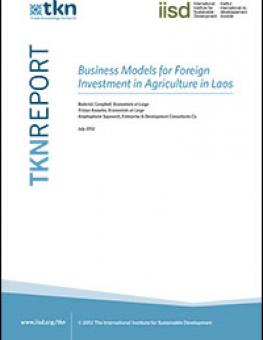
Business Models for Foreign Investment in Agriculture In Laos
This paper investigates foreign direct investment (FDI) into the agriculture sector of Laos in an attempt to understand the pros and cons of various business models, focusing on the model of land acquisition used by foreign investors and the extent to which various business models are contributing to economic development.
The research has shown that Laos is meeting its stated macroeconomic growth targets for agriculture, although these can mask negative impacts on local populations. This highlights the important distinction between economic growth and economic development. The link between FDI and broader economic and agricultural development goals also remains unclear. To improve this, business models should be encouraged that more clearly align with both development and growth objectives. Laos is making steps to improve in all of these areas but will need to ensure that initiatives at a central level are carried through and enforced at a provincial and district level. A lack of clear land rights, frequently changing investment laws and poor transparency are potential barriers to some investors. Similarly, a lack of reliable socioeconomic data makes it difficult to assess the likely impacts of large-scale projects.
You might also be interested in
Mahembe Coffee
This case study analyzes the extent to which a small agribusiness in Rwanda complies with international standards for responsible investment in agriculture.
LIMBUA Group Limited
This case study analyzes the extent to which a small agribusiness in Kenya complies with international standards for responsible investment in agriculture.
Sénégalaise des Filières Alimentaires
This case study analyzes the extent to which a small rice miller in Senegal complies with international standards for responsible investment in agriculture.
Tropic Coffee
This case study analyzes the extent to which a small coffee processor and trader in Rwanda complies with international standards for responsible investment in agriculture.